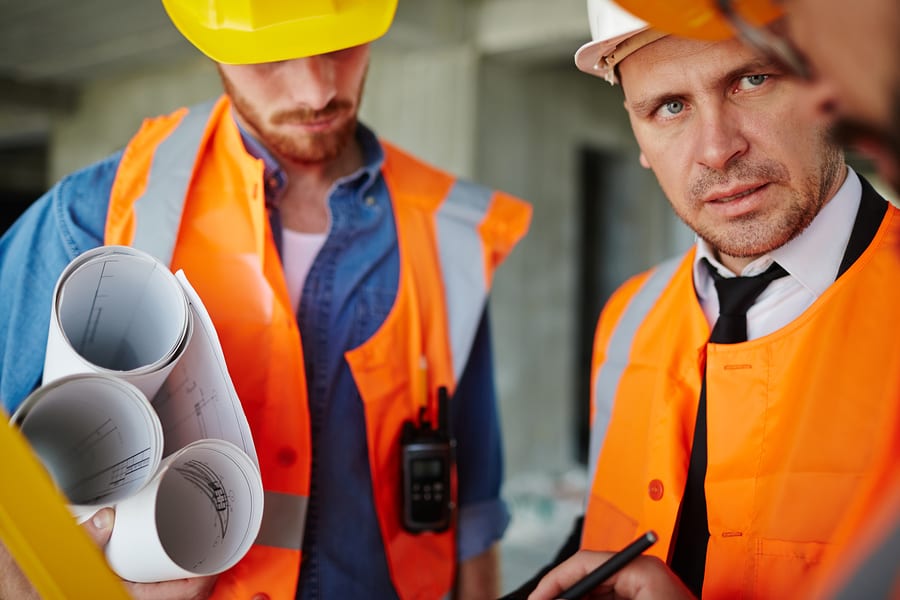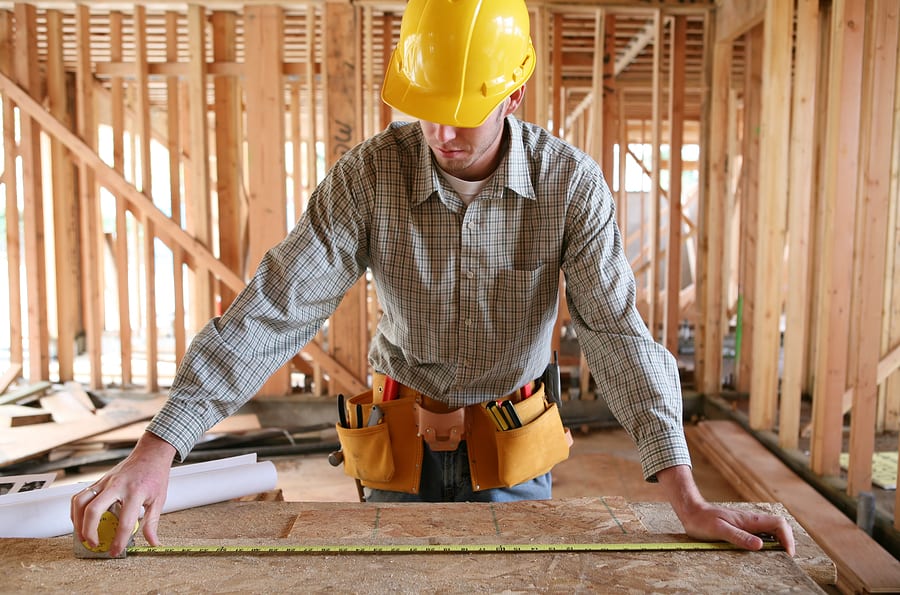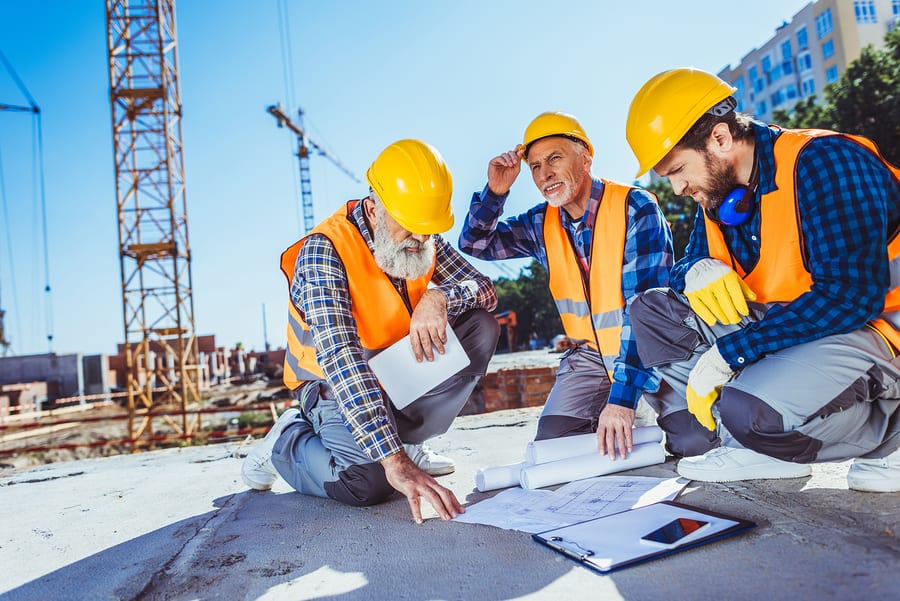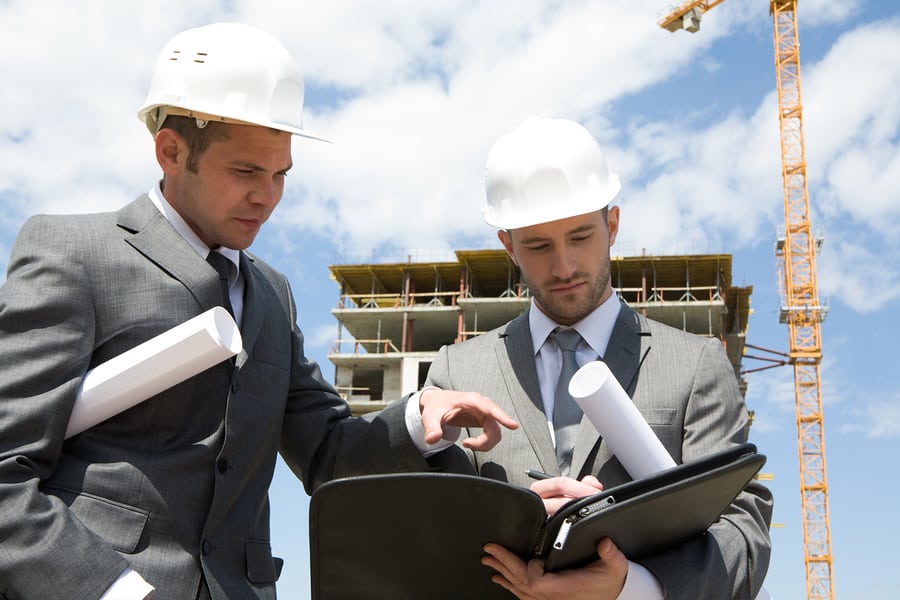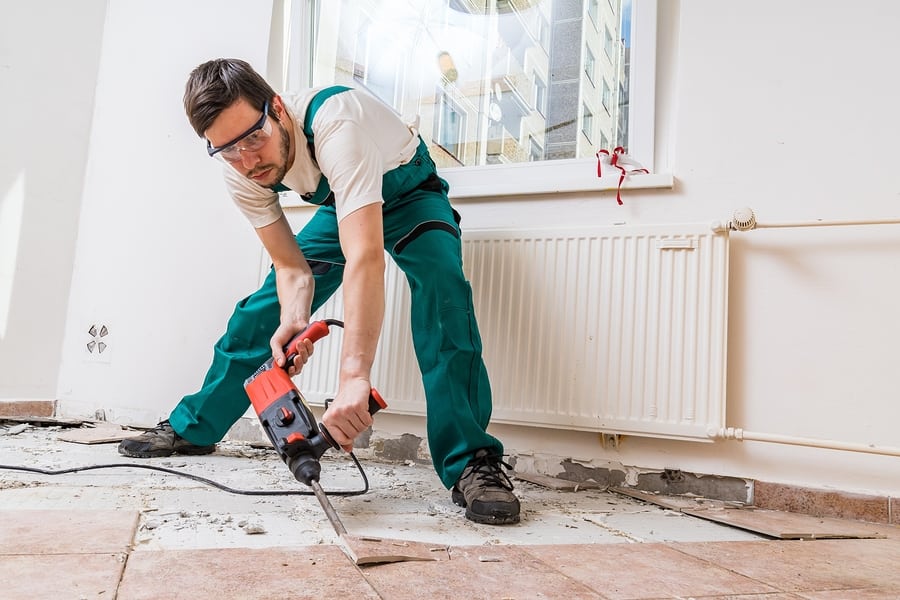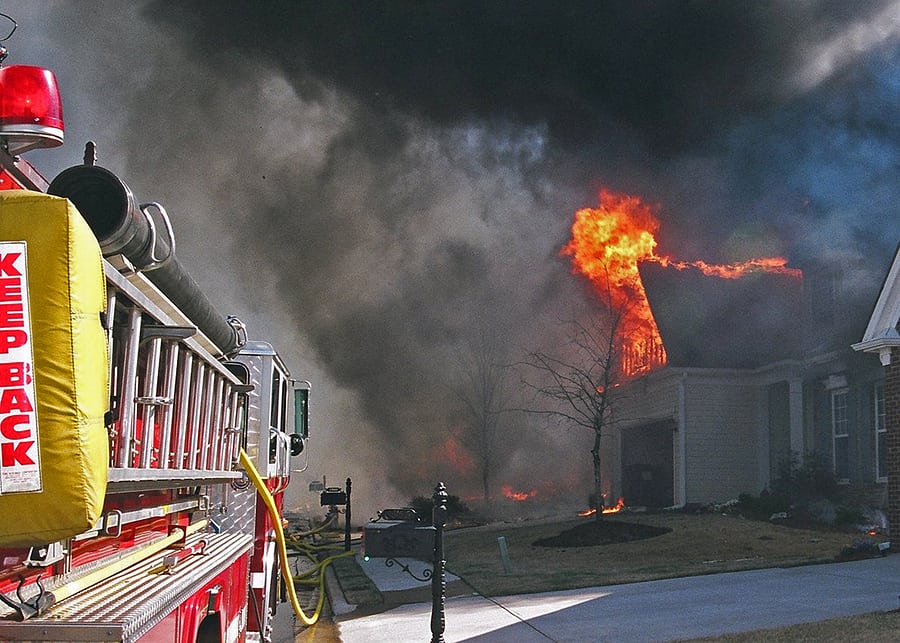by jeffp | Nov 26, 2018 | Construction

With a looming slowing in construction in 2019, its become increasingly important to maximize efficiency to ensure profitable construction projects. Here are some tips from the pros on maximizing profitability in construction.
1. Attract Talent (and keep it!)
You already know it is a tight labor market. Many face limits in how much work they can take on because of staffing limitations. To remain competitive, its suggested to offer better benefits as a part of a strategy to keep talented workers.
2. Go Green
With news and government reports continuing to sound alarm bells about the Earth’s ecosystem, it’s a great time to solidify your “green” construction skills and market those capabilities as a key differentiation. Ecological awareness is growing and business with credibility for green policies are more likely to grow. In construction, smart strategies for handling material waste, resource consumption, and disposal are key. If you can deliver a build that also minimizes environmental impact, all the better.
3. Control Costs
By keeping solid talent you’ll reduce recruitment costs. Smart insurance strategies can maximize protection while lowering costs. Worker Safety programs can keep workers on the job instead of recovering from injury. All of this works together to decrease costs over time.
4. Construct With Modular & Prefab
Modular and prefabricated systems help reduce waste and disposal costs. They can be easier to work with once the systems are understood. While they may be more expensive from a material acquisition perspective, they often reduce labor costs.
Approaching 2019 with a positive attitude and the right strategies can help you gain a competitive edge over the competition. For a complete review of your insurance and benefits reach out to us for assistance. We’ll be glad to help and point you in the right direction.
by jeffp | Nov 20, 2018 | Construction

Contractors invest a lifetime perfecting their craft. Some have shared their best techniques for making build projects better, faster, and more profitable. Here’s a quick rundown of these inside tips from the pros.
Pay Attention to Framing
The majority of homes have imperfections and the older they get, the higher those flaws become. Homes settle and floors and walls begin to curve, slope, or separate. Before making cuts, be sure to review the acceptable tolerances for the lumber you’re working with.
Frames must be straight, so it’s essential to begin with a level foundation. Walls can bow up to 1/4″ vertically for each 8′ area, and 1/4″ horizontally for each 50′ area without compromising structural integrity.
The frames in a house support plumbing, electrical, HVAC setup and more. An accurately-installed structure will assist make following projects much easier to complete.
Work With Solid Lumber
Lumber varies by seller, batch, and tree. When picking the lumber for framing, search for long lasting and straight boards. Curved, bowed, or “imperfect” boards will produce a weak or imbalanced foundation from the start. Cabinets, walls, and doors require straight walls to work properly. Choosing the best wood, at the beginning, will help the whole construction job.
Subfloor Prep
Installing a stable subfloor can assist with creating a level surface area, yet the glue can be untidy and challenging to work with. To set up subflooring without the mess, carefully lower subfloor with a garden digging tool.
Be Insured & Bonded!
With any building job, selecting the right products and tools helps. Before tackling a building and construction project, make sure your company and the project have insurance and bonds in place to protect yourself from unforeseen events that can get in the way of completing a project. Also constantly emphasize the best safety practices with your team.
by jeffp | Oct 22, 2018 | Construction

Although construction may not be the first industry you think of when we say “innovative technology”, the construction industry is currently at the bleeding edge of new technology, making high-rise buildings easier to erect than ever before. New technology isn’t only making things more efficient; it’s making them safer too. So what exactly is going on in construction technology trends right now?
1. Wearable tech
Workers are commonly now being given wearable trackers which are said to improve their safety and decrease the price of workers’ compensation for employers. This tech can inform management when a worker is injured or in distress, getting them the assistance they need much more quickly. The devices can also track things such as heart rate, posture, and body temperature, allowing supervisors to monitor their staff and see when someone is straining themselves or overheating on a hot day.
2. Property sensors
Water infiltration can be a costly problem for construction bosses, but building sensors are helping to alleviate this problem. These sensors track water, temperature, and moisture, among other things. This is useful, for example, when working on a large building in which a pipe suddenly bursts, causing a massive leak. The quicker the problem is remotely detected and dealt with, the less costly the repairs will be.
3. RFID tech
When working on large buildings, it can be a logistical nightmare to get workers up and down the various floors all the time, leading to tiredness and time delays. Luckily, Radio Frequency Identification (RFID) technology gives supervisors an eye in the sky, allowing them to track their workers’ locations on a building site and devise ways of minimizing logistical problems on unfinished buildings.
4. VR modules
Virtual Reality isn’t just for video games – it can be used to train construction workers and help them to prepare for dangerous situations which they may face on a real-life construction site. For example, some VR modules allow workers to practice walking across steel beams while hundreds of feet in the air. Although it will never compare to the real thing, it could be the stepping stone which saves a life one day. It’s better to have someone virtually fall from a steel beam while training, than to have them actually fall from a steel beam in real life.
5. 3D Laser Scanning
Known by some people as “LIDAR”, 3D laser scanning uses lasers to create 3D blueprints of finished rooms, allowing workers to ascertain distances down to the millimeter. This allows contractors to compare these 3D blueprints to the real-life completed rooms, assessing how accurate the results have been compared to the plans. 3D laser scans are incredibly accurate compared to more traditional blueprints, giving designers and architects a degree of accuracy which has never been possible in the past.
With the construction industry being so notoriously dangerous and problematic, it’s perhaps no surprise that it’s an area which receives so much technological innovation. As technology becomes more accurate, worker safety can only get better and better over time. This is not only good for the workers who are in dangerous situations, it’s good for the employers who wish to reduce their costly insurance premiums by monitoring their workers’ health and safety in real time.
Looking for ways to reduce your insurance premiums or workers’ compensation rates on your construction site? Get in touch with a member of our knowledgeable insurance team today!
by jeffp | Sep 7, 2018 | Construction

Construction is an inherently dangerous business, constantly ranking at the top of the most dangerous industries to work in. Luckily, with effective management and solutions, this danger can be greatly reduced. Nonetheless, it is crucial that construction companies arm themselves with good business insurance policies which protect them when things go awry – and they will eventually. Below we offer you 4 concrete reasons why construction companies need business insurance.
1. General liability
Although you can train your workers until the cows come home, accidents and human error still happen. Normally this isn’t too much of an issue for most businesses, but a minor slip-up at a construction site could quickly lead to death or serious injury. As a result, you require general liability insurance to protect your company against death and injury claims, as well as damage claims and product claims which can arise when projects don’t go as planned. You can also use this policy for copyright claims, which may occur, for example, if a competing company sues you for allegedly infringing the copyright on one of their project designs.
2. Professional liability
This insurance, also known as E&O (errors and omissions) cover, protects you if your advice or counsel leads to bad consequences for your client, such as financial losses. This type of insurance is more geared toward professional negligence, misrepresentation, poor advice, violation of good faith and fair dealing practices. If failing to carry out your work at an appropriate level could lead to clients suing you down the road, it would advisable to seek professional liability insurance.
3. Commercial vehicles
If you or one of your employees is involved in a crash while driving a commercial vehicle for the company, commercial auto insurance could cover your subsequent medical bills and any damaged property, including the car itself. If your company has a fleet of vehicles, which is not unlikely, you should strongly consider getting extensive commercial auto insurance which protects you, your team, and your vehicles.
4. Workers’ compensation
As is the case for the vast majority of businesses, you are legally required to have workers’ compensation insurance if you own a construction company. This type of policy is very common, and will cover lost salary and medical bills in the event that one of your team is injured on the job. It will also protect your company from being sued by injured workers, which is as good a reason as any to make sure that your workers’ compensation insurance is up to scratch.
If you run a construction site and you’re looking at various forms of business insurance but aren’t sure which is right for you, get in touch with us today! We have years of experience in the insurance industry and can point you in the right direction.
by jeffp | Aug 25, 2018 | Construction

Whether it’s falling machinery, fire hazards, or tripping over debris, construction remains one of the most dangerous industries to work for in the US and worldwide. However, some construction jobs are consistently ranked as the most dangerous ones in the industry, so take special care if you find yourself involved in one of these construction-based tasks.
1. Working with power tools
When you first work with power tools, you tend to be very cautious. However, with repeated use, the tasks become more mundane and easy for the worker, which can actually lead to dangers. The more that a task becomes “second nature”, the more likely you are to lose concentration and form sloppy habits which aren’t safe. According to the OSHA, 37,000 people injure themselves every year from nail guns alone. Be careful with power tools!
2. Operating heavy equipment
It’s not uncommon to find heavy machinery on construction sites, and the operators of this potentially dangerous machinery need to be well trained and educated on safe procedures. Heavy machinery should be maintained and inspected regularly, ensuring that it is safe to use for operators.
3. Constructing ducts and sewers
Working in confined spaces is dangerous if proper ventilation is not provided, as workers could be low on vital levels of oxygen and thus become unwell. Tight spaces obviously present a range of challenges, including getting trapped, so there needs to be evacuation and emergency routes planned well in advance of work being carried out.
4. Demolishing things
As fun as it may seem, demolition is an undoubtedly risky business. Demolition is construction’s most unpredictable job, as despite one’s best guesses, the forces of physics may bring down a building in unexpected ways. Of course, this volatility can be mitigated with proper planning, but demolition carries an innate sense of “anything can happen”.
5. Working at height
Working on high-rise construction sites presents an obvious danger of falling from a great height (probably to your death) if adequate safety equipment is not provided. 40% of construction site deaths are caused by falls, so it’s essential to take all the proper safety precautions on high-rise projects in order to avoid death or serious injury in your team.
Construction is a dangerous industry, as countless workers have unfortunately found out over the years. If you’re looking for advice on minimizing construction site hazards, speak to a member of our team today!
by jeffp | Aug 21, 2018 | Construction

Between 2007 and 2011, US fire departments were sent out to an average of 5,120 fires taking place at construction/renovation sites, with a total of 9 deaths, 94 injuries, and $265 in damages accompanying such fires. However, it doesn’t have to be this way! Heed our advice about controlling the danger of construction zone fires.
When planning a construction project
Before you start construction, review the entire site for fire hazards and assess how easy or difficult it would be for firefighters to reach the site with their equipment. It is essential to plans routes for firefighters, ensuring that their access to nearby fire hydrants is not impeded. You should also teach employees how to prevent fires and deal with them should they occur, perhaps implementing a Hot Work Permit system which enforces certain protocols when dealing with open flames, sparks, and heat in general.
For every 3000 square feet of protected building area, there needs to be at least one fire extinguisher which is rated 2A or better. From the protected area to the fire extinguisher, there must be a no more than 100 feet to cover. Also, if there are multiple levels, an extinguisher should be put in the stairwell near the entrance to levels. It is also a good idea to have a sprinkler system installed if possible.
If you’re working in a cold area and there are temporary heaters around, be sure to attach them to a solid base and place them far away from combustible materials and any woodwork, remembering to turn them off as you leave!
During a construction project
On-site inspections should be regularly carried out around the work area and anywhere where workers frequent, documenting material storage areas and keeping track of flammable materials. In order to help with fire prevention, any trailers or portable offices should be made from noncombustible materials and should be a minimum of 50 feet away from construction sites, as well as 30 feet away from other trailers.
When it comes to flammable materials, be sure to store them appropriately and minimize how many you have around. In addition to this, enforce a no smoking policy throughout your entire construction site, although this should be common sense! The dumpsters you use should be positioned away from buildings, and metal containers with closing tops should be used for potentially-flammable rags.
It’s best to avoid burning refuse, but if you must, do it at least 150 feet away from any buildings, bearing in mind that some regions have temporary or permanent burning bans in place for open fires, especially if nearby forest fires are currently blazing away.
Being aware of fire hazards and how to prevent them is one of the easiest ways to enhance the safety of construction sites, but many people remain uneducated about the best ways to minimize risks. If you’d like more information and tips on fire prevention in construction sites, get in touch with us today!

